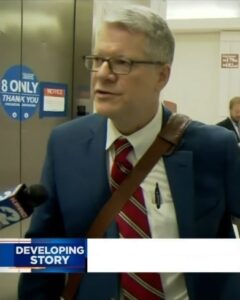TEXAS FAMILY CODE
TITLE 3. JUVENILE JUSTICE CODE
CHAPTER 51. GENERAL PROVISIONS
Sec. 51.01. PURPOSE AND INTERPRETATION. This title shall be construed to effectuate the following public purposes:
(1) to provide for the protection of the public and public safety;
(2) consistent with the protection of the public and public safety:
(A) to promote the concept of punishment for criminal acts;
(B) to remove, where appropriate, the taint of criminality from children committing certain unlawful acts; and
(C) to provide treatment, training, and rehabilitation that emphasizes the accountability and responsibility of both the parent and the child for the child’s conduct;
(3) to provide for the care, the protection, and the wholesome moral, mental, and physical development of children coming within its provisions;
(4) to protect the welfare of the community and to control the commission of unlawful acts by children;
(5) to achieve the foregoing purposes in a family environment whenever possible, separating the child from the child’s parents only when necessary for the child’s welfare or in the interest of public safety and when a child is removed from the child’s family, to give the child the care that should be provided by parents; and
(6) to provide a simple judicial procedure through which the provisions of this title are executed and enforced and in which the parties are assured a fair hearing and their constitutional and other legal rights recognized and enforced.
Acts 1973, 63rd Leg., p. 1460, ch. 544, Sec. 1, eff. Sept. 1, 1973. Amended by Acts 1995, 74th Leg., ch. 262, Sec. 2, eff. Jan. 1, 1996.
Sec. 51.02. DEFINITIONS. In this title:
(1) “Aggravated controlled substance felony” means an offense under Subchapter D, Chapter 481, Health and Safety Code, that is punishable by:
(A) a minimum term of confinement that is longer than the minimum term of confinement for a felony of the first degree; or
(B) a maximum fine that is greater than the maximum fine for a felony of the first degree.
(2) “Child” means a person who is:
(A) ten years of age or older and under 17 years of age; or
(B) seventeen years of age or older and under 18 years of age who is alleged or found to have engaged in delinquent conduct or conduct indicating a need for supervision as a result of acts committed before becoming 17 years of age.
(3) “Custodian” means the adult with whom the child resides.
(4) “Guardian” means the person who, under court order, is the guardian of the person of the child or the public or private agency with whom the child has been placed by a court.
(5) “Judge” or “juvenile court judge” means the judge of a juvenile court.
(6) “Juvenile court” means a court designated under Section 51.04 of this code to exercise jurisdiction over proceedings under this title.
(7) “Law-enforcement officer” means a peace officer as defined by Article 2.12, Code of Criminal Procedure.
(8) “Nonoffender” means a child who:
(A) is subject to jurisdiction of a court under abuse, dependency, or neglect statutes under Title 5 for reasons other than legally prohibited conduct of the child; or
(B) has been taken into custody and is being held solely for deportation out of the United States.
(8-a) “Nonsecure correctional facility” means a facility, other than a secure correctional facility, that accepts only juveniles who are on probation and that is operated by or under contract with a governmental unit, as defined by Section 101.001, Civil Practice and Remedies Code.
(9) “Parent” means the mother or the father of a child, but does not include a parent whose parental rights have been terminated.
(10) “Party” means the state, a child who is the subject of proceedings under this subtitle, or the child’s parent, spouse, guardian, or guardian ad litem.
(11) “Prosecuting attorney” means the county attorney, district attorney, or other attorney who regularly serves in a prosecutory capacity in a juvenile court.
(12) “Referral to juvenile court” means the referral of a child or a child’s case to the office or official, including an intake officer or probation officer, designated by the juvenile board to process children within the juvenile justice system.
(13) “Secure correctional facility” means any public or private residential facility, including an alcohol or other drug treatment facility, that:
(A) includes construction fixtures designed to physically restrict the movements and activities of juveniles or other individuals held in lawful custody in the facility; and
(B) is used for the placement of any juvenile who has been adjudicated as having committed an offense, any nonoffender, or any other individual convicted of a criminal offense.
(14) “Secure detention facility” means any public or private residential facility that:
(A) includes construction fixtures designed to physically restrict the movements and activities of juveniles or other individuals held in lawful custody in the facility; and
(B) is used for the temporary placement of any juvenile who is accused of having committed an offense, any nonoffender, or any other individual accused of having committed a criminal offense.
(15) “Status offender” means a child who is accused, adjudicated, or convicted for conduct that would not, under state law, be a crime if committed by an adult, including:
(A) truancy under Section 51.03(b)(2);
(B) running away from home under Section 51.03(b)(3);
(C) a fineable only offense under Section 51.03(b)(1) transferred to the juvenile court under Section 51.08(b), but only if the conduct constituting the offense would not have been criminal if engaged in by an adult;
(D) failure to attend school under Section 25.094, Education Code;
(E) a violation of standards of student conduct as described by Section 51.03(b)(5);
(F) a violation of a juvenile curfew ordinance or order;
(G) a violation of a provision of the Alcoholic Beverage Code applicable to minors only; or
(H) a violation of any other fineable only offense under Section 8.07(a)(4) or (5), Penal Code, but only if the conduct constituting the offense would not have been criminal if engaged in by an adult.


